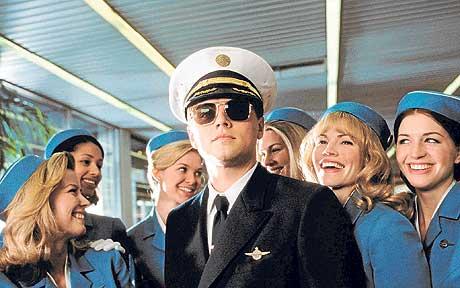Firm Management
Getting Your Partners “On Board”
Passengers and flight attendants had a common goal – get to our destination safely and on time. But for that to happen, we needed two critical people. Those two key people had the same goal as the rest of us – get to our destination safely and timely.
Oct. 11, 2016

Where are the pilots? “Attention ladies and gentlemen. We are fully boarded and your flight attendants are ready to go. Unfortunately, we’re still waiting for the pilots. It will be a few more minutes until they get here and then we can take off.”
This has happened to me several times while traveling over the past couple of years. The airline decides to start boarding the flight before the pilots are even on the plane – hoping that we can make up time. The pilots are most likely coming from another flight that has been delayed. Whenever this happens, you know your flight is going to be much later than expected. With the time pilots need to get settled and go through their pre-flight checklist and routines, not to mention time to wait and taxi on the runway, you can expect delays in getting to your destination.
There’s always a silver lining, though. That silver lining is the observation that this type of event has a lot of similarities to what I see playing out every day in many CPA firms. It may serve as a guide to how we can overcome these delays.
Without the pilots, we’re stuck on the ground. Our flight attendants did a fantastic job boarding the passengers and readying the cabin. Passengers were in our assigned seats and ready to go. The only problem is we didn’t have the two pilots we needed to fly that plane.
Passengers and flight attendants had a common goal – get to our destination safely and on time. But for that to happen, we needed two critical people. Those two key people had the same goal as the rest of us – get to our destination safely and timely. Even though we all had the same goals, it wasn’t happening. We needed those two pilots in their seats to fly the plane.
Is your firm “grounded”? Think about this – how many times have you observed the following in your firm: Changes happen to your process. It could be a new software program has been implemented, a change in workflow, a different way of handling data, etc. You go through training; everyone learns the new program/process, and you think you’re ready to go. The only problem is you have some people in leadership at the partner levels that are “not on board” with the process. This derails the effectiveness of the implementation.
Without those key individuals on board, your firm is not getting to its desired destination. You’re essentially grounded. It may feel like you’re spinning your wheels, with managers and staff (and some partners who are on board) trying hard to take off, only to be held back because a key pilot (or pilots) are not on board. This is obviously not effective for your firm, or in the bigger picture, for your clients.
Who are the pilots in your firm? Part of the Lean Six Sigma process improvement approach is working to get all of our pilots on board the aircraft in a timely manner. It doesn’t matter what past precedent has been in your firm. Every firm has had partners who are resistant to change. This is because most of the time in the past, process improvement hasn’t been implemented in a way that seeks to build buy-in from the beginning and from a global perspective (making sure to answer the two key “why” questions for the changes – 1) Why did we need to change? and 2) Why will this change be better than what we’re currently doing?).
In the past, the firm hasn’t taken a methodical approach to building a case for targeted improvements to the process (following the powerful 5-step DMAIC process improvement model for Define, Measure, Analyze, Improve and Control).
Also in the past, the firm may not have utilized a truly cross-functional team of experts who are looking at the big picture of the process and everyone’s mutual objectives – where are we trying to go?
Let’s put what has happened in the past behind us. I know how frustrated so many people are in this profession with the lack of consistency and process in firms. There’s certainly a great deal of personal preferences – which add value to neither the firm nor the client. Worse yet, there’s sometimes an overall lack of wanting to work together. The feeling of working harder and harder with no end in sight and for what?
The opportunities for our firms are so obvious. There is a better way. Let’s work together to identify where we want to be and make sure our pilots are in their seats in the cockpit when we’re ready to take off. Your passengers don’t want to be late.
